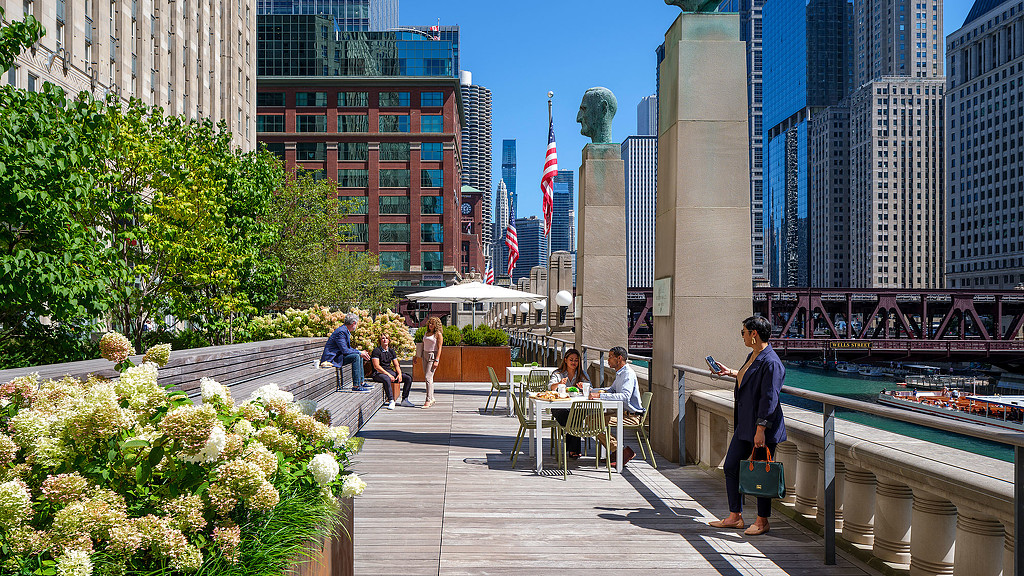Gensler’s City Pulse Retrospective Tracks the Complex Shifts in Urban Life
April 30, 2024 | By Sofia Song, Stella Donovan, and Jacqueline Scherr
Gensler launched its first City Pulse study in 2020 during the first weeks of the global pandemic. As we continued the research into 2021, and while headlines around the world proclaimed the death of cities, we set out to discover what might keep them alive. Our latest report, “The Return of the City: A 2024 Retrospective of the City Pulse,” looks back on our research and illustrates how global perceptions shifted in 15 global cities between 2021 and our most recent data collection in 2023. A common theme emerges from our data: urban life has pain points, but the desirability of cities is persistent.
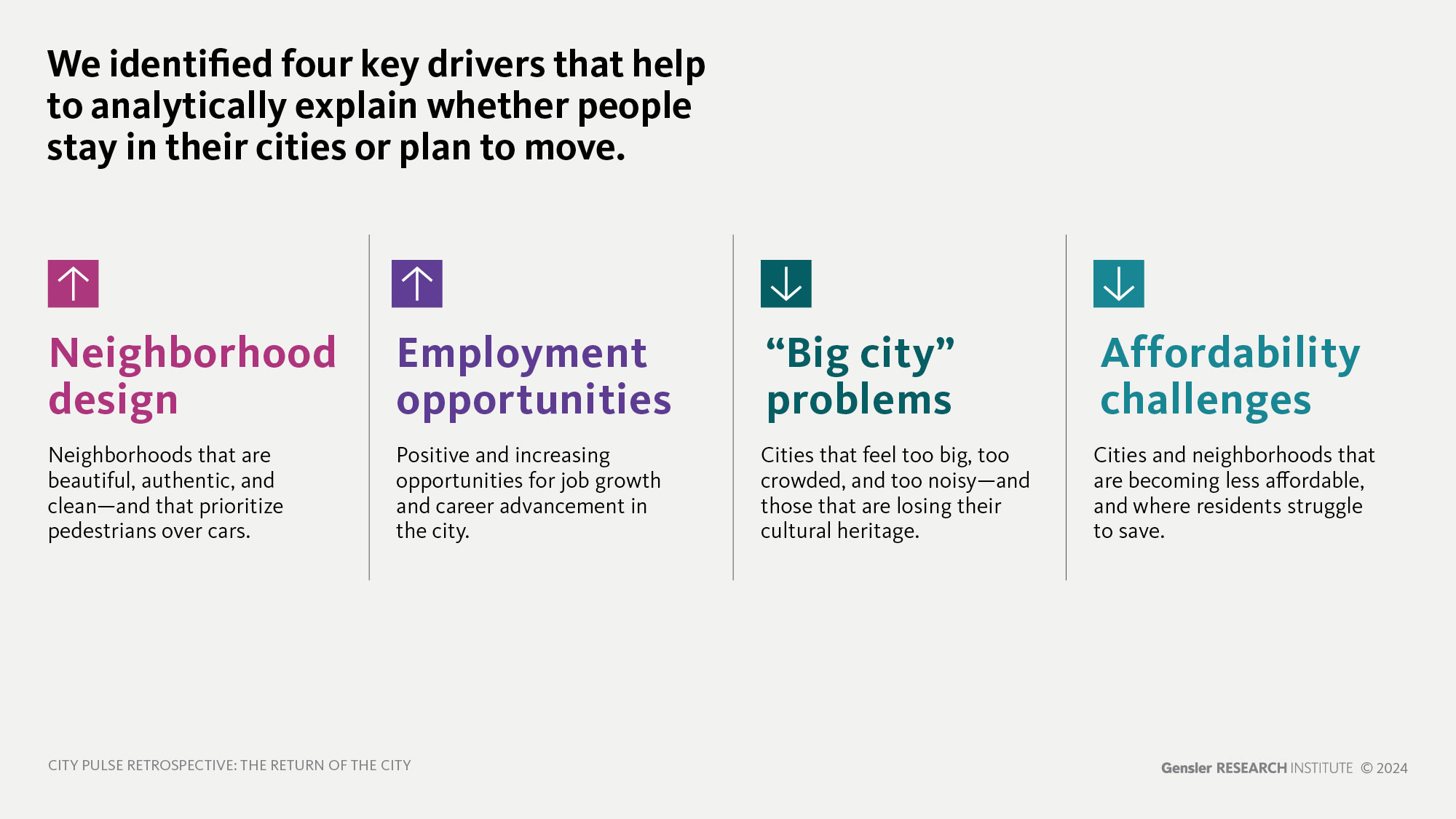
Leveraging our ongoing data collections, we were able to ascertain four statistical drivers of whether a person was planning to stay in their city or relocate.
We found that neighborhood design — where people feel that their neighborhoods are beautiful, authentic, clean, and pedestrian-friendly — is a positive driver in attracting and retaining residents. Similarly, employment opportunities and job/career growth also make people want to stay in their cities. However, “big city” problems like noise, crowds, and a loss of cultural heritage are likely to make people want to move. Affordability challenges at the city and neighborhood level can also drive urban residents away.
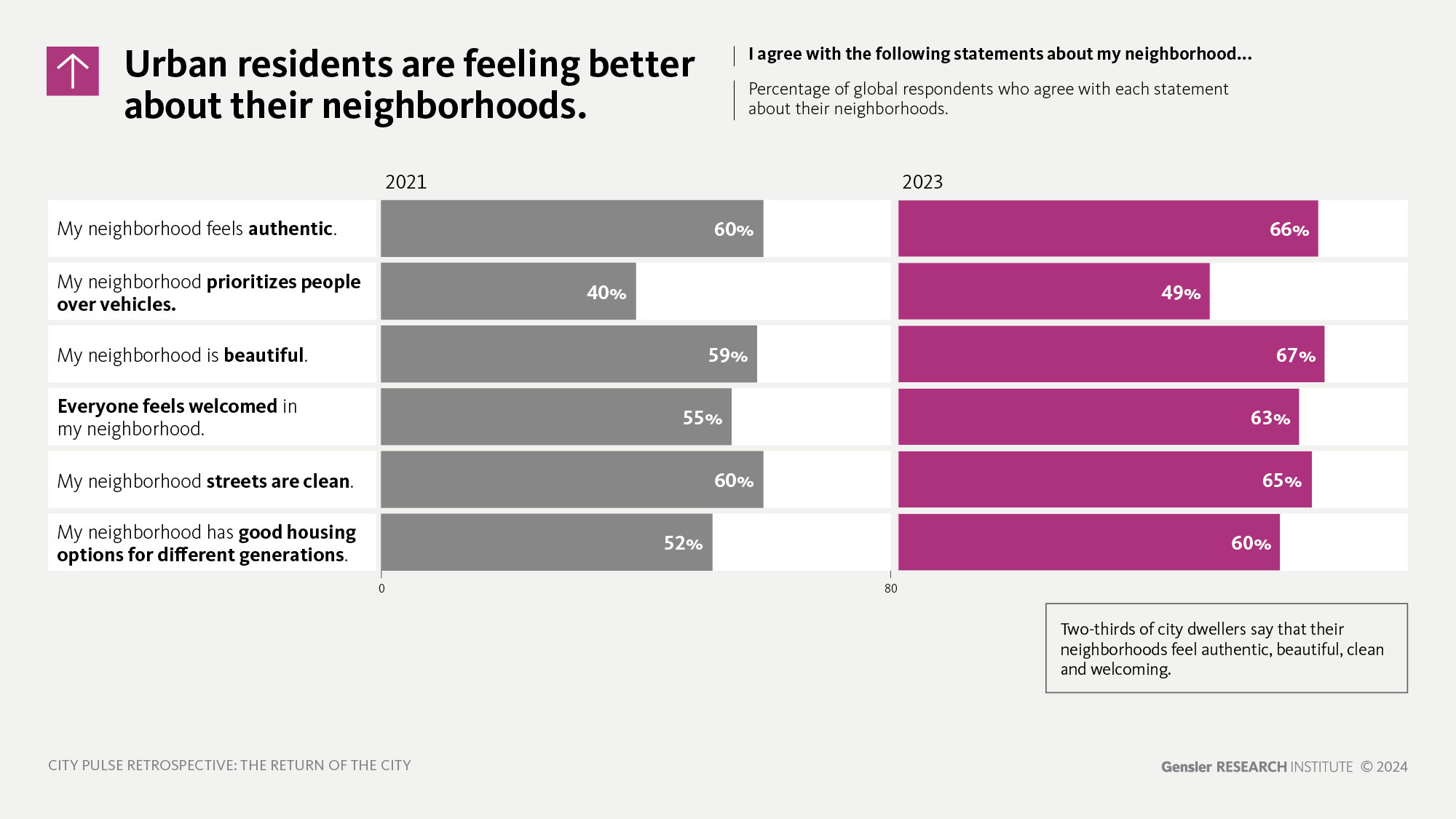
Two-thirds of urban residents say that their neighborhoods feel authentic, beautiful, clean, and welcoming.
At the start of the COVID-19 pandemic, levels of neighborhood isolation intensified as cities around the world went into lockdown. Rates of violence and crime increased in many neighborhoods — particularly those that were already socioeconomically disadvantaged or marginalized. Our data indicates that some of these concerns are receding — residents of the 15 cities profiled in this data collection felt more positively about their neighborhoods and cities in our most recent 2023 data than they did in 2021. More people think that their neighborhoods feel authentic, beautiful, clean, and welcoming. More respondents also feel that their neighborhoods offer multigenerational housing options. Additionally, 49% of urban residents feel that their neighborhoods prioritize pedestrians over cars.
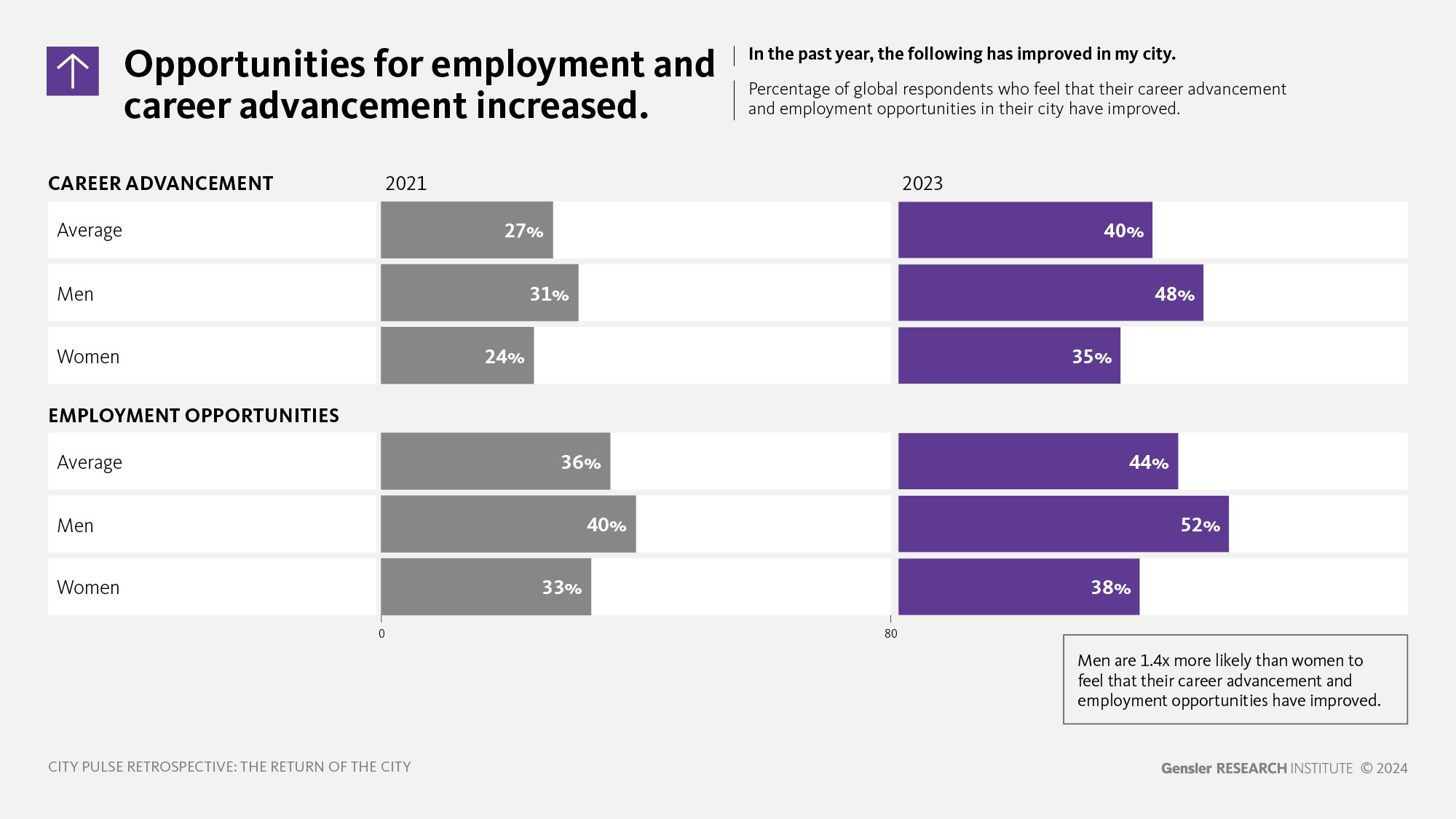
Perceived career advancement and employment opportunities have improved for global respondents.
The pandemic initiated one of the most severe employment crises since the Great Depression, triggering a mass overhaul of not only how and where we worked, but the availability of work in general. Fortunately, labor markets around the world are showing signs of recovery. The global unemployment rate dropped from 6.6% in 2020 to an estimated 5.1% in 2023. Since 2021, our data has shown a 13% increase in people who feel that their career advancement has gotten better, and an 8% increase in people who feel that employment opportunities in their city have improved. According to global sources, more women left the workforce than men during the pandemic. Our data shows that this gap continues to persist — men are 1.4x more likely than women to feel that their career advancement and employment opportunities have improved.

Urban dwellers feel that their city’s air quality and noise level have improved, but more people feel that their city is too big.
Our cities have undergone a series of dramatic shifts in recent years as a result of the impacts of the pandemic on our work, life, and travel patterns. Our 2023 data offers an insight into how those trends are evolving. Half of respondents feel that their cities have clean air, and fewer respondents feel that their city is too noisy or losing its cultural heritage. Despite these improvements, more respondents in 2023 believe their city is “too big.” As we found in our 2022 Urban Mobility report, today’s city dwellers want to be located closer to work, errands, shopping, and leisure than they did before the start of the pandemic. The increased desire for walkability that emerged during the public health crisis remains an important requirement.
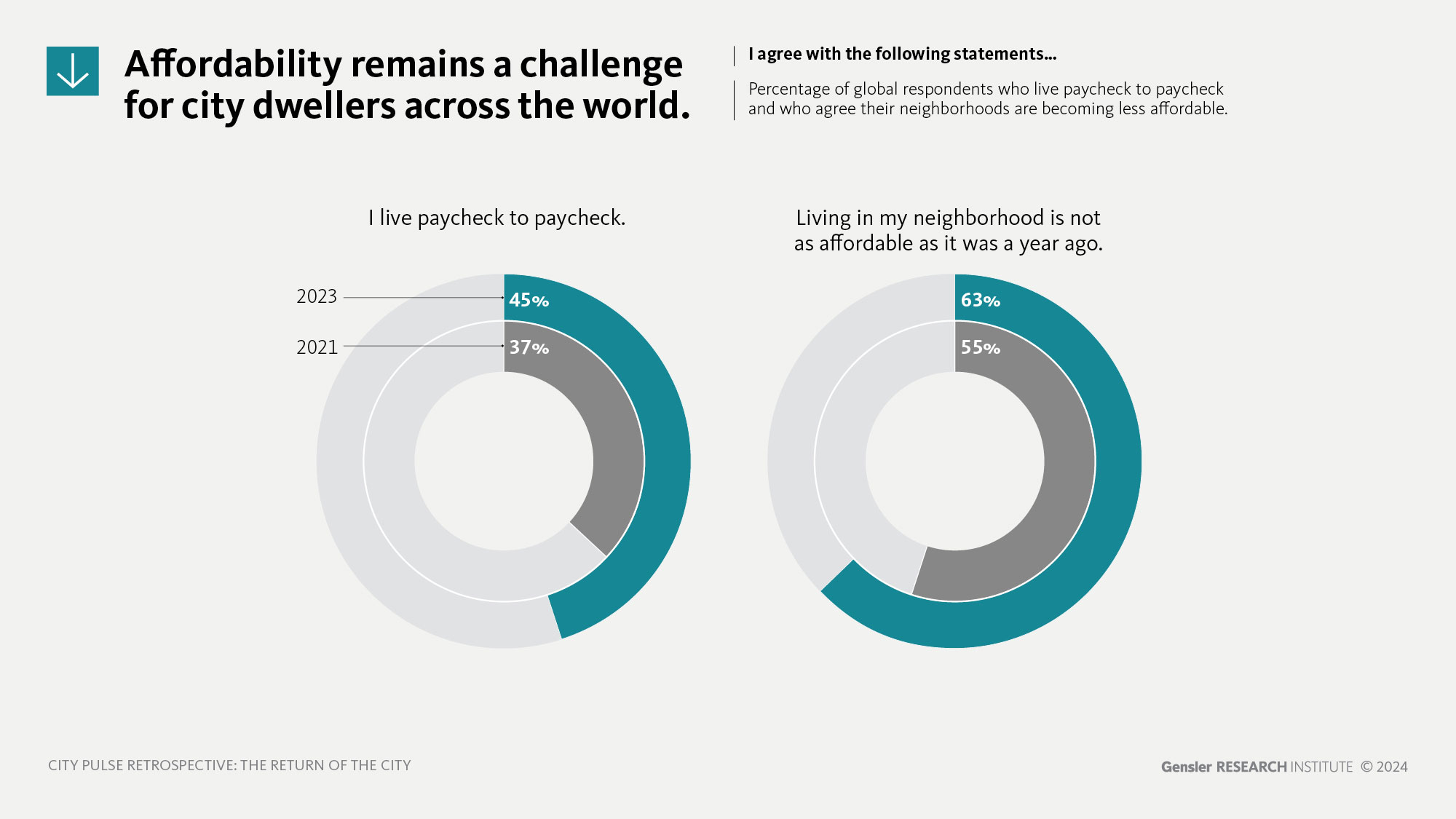
Nearly half of respondents live paycheck to paycheck, and two-thirds feel that their neighborhoods are becoming more expensive.
A volatile/uncertain global economy continues to align with urban residents reporting individual financial challenges. While the pandemic disrupted the production and distribution processes of many industries, other forces like extreme weather events, Russia’s invasion of Ukraine, and the Israel-Hamas war have driven the prices of many commodities to near-record highs around the world. Nearly half (45%) of global respondents say that they are living paycheck to paycheck. Additionally, 63% of respondents feel that living in their neighborhoods is not as affordable as it was a year ago.
Urban living has taken a complex trajectory, showing key improvements alongside persistent challenges.
Overall, city dwellers feel that many aspects of urban life have improved since 2021. However, certain obstacles — particularly those around cost and affordability — have become more challenging. From the bubonic plague of medieval times to 1918’s Great Influenza, pandemics have catalyzed urban reinvention. Our research shows that we are once again at that pivotal historical moment. The appeal of cities remains strong and will likely grow in the years to come.
For media inquiries, email .
